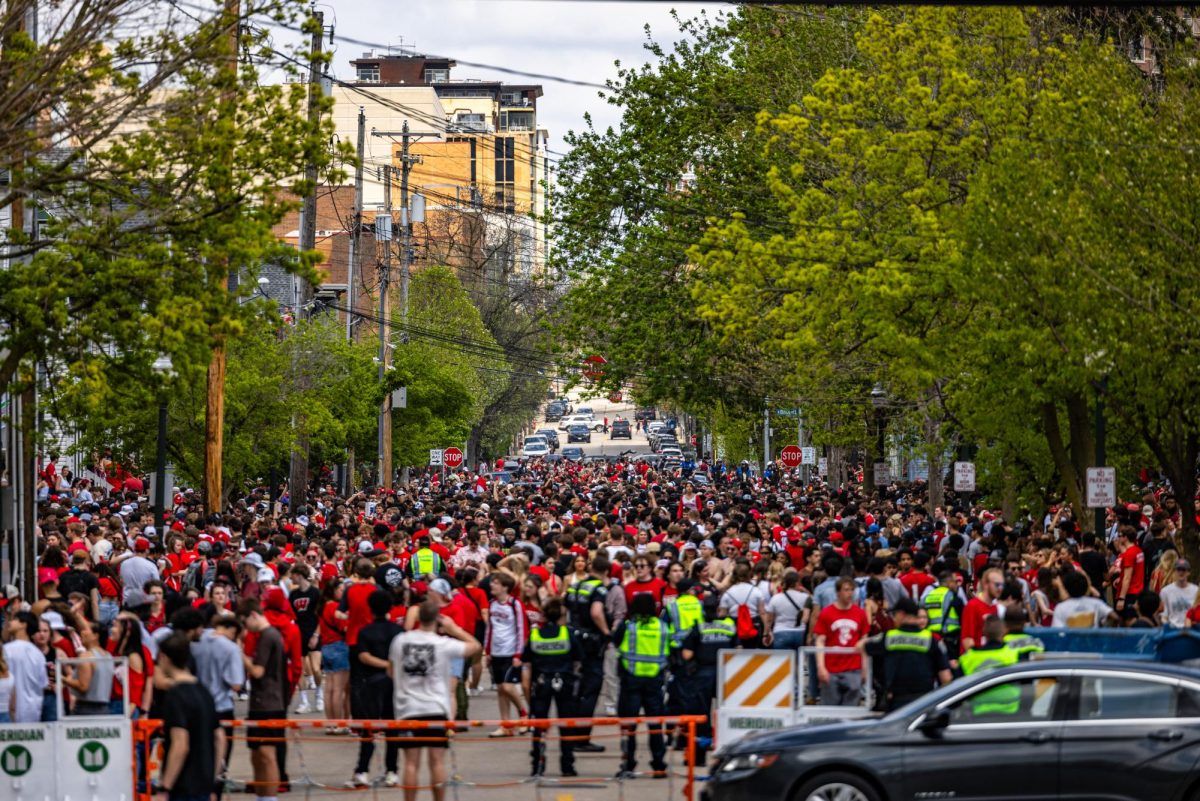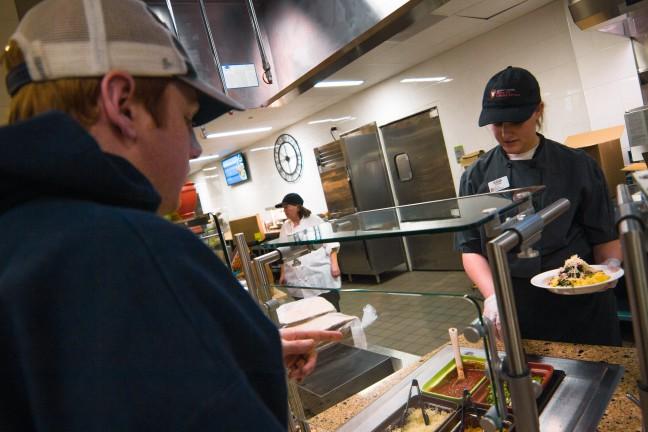Looking to engage students on campus in wider labor issues, Student Labor Act Coalition kicked off a campaign Tuesday to raise the campus minimum wage to $15 an hour.
SLAC representatives said this is related to a change in campus regulations restricting student employees to a 29 hour work week.
Over the summer, the University of Wisconsin capped the number of hours student employees can work in response to regulations installed by the Affordable Care Act, a move UW believes will cause little harm but has students concerned.
The ACA requires large employers to provide health care coverage to individuals who work at least 30 hours a week. Because the UW doesn’t have the ability to provide health care for student employees, UW spokesperson John Lucas explained in an email to The Badger Herald that the new regulations limit students to working no more than 29 hours a week.
Lucas asserted that the impact of the new regulation is minimal. Out of 15,000 student employees, Lucas said only 30 work more than 30 hours a week.
https://badgerherald.com/news/2016/07/19/affordable-care-act-limits-student-workers-to-30-hours-a-week/
Brendon Dybdahl, UW Housing spokesperson, said of the 1,700 student workers he oversees he hasn’t had an instance of anyone going over the 30 hour per week limit, even before the ACA limits were enforced. Dybdahl said it is rare in his experience that a student manages to put in more than 29 hours while still keeping up with academics.
“Something that we have advised students on all along is the academic part of what they are here for, it’s their main focus,” Dybdahl said. “So we have never really encouraged students to go beyond [29 hours a week] because their schooling should come first.”
Yet student workers have a different view of these cuts.
Sophia Rogers, a member of SLAC said those who are working 30 hours a week or more need the money the most and are the hardest workers on campus. She said though some may argue the 29 hour cap may help students focus on their academics, it will only place a higher burden on low-income students who need the money to remain in school and pay for things like rent and books.
Rogers said the university is using the ACA as a “scapegoat” to justify a change that will save UW money.
“What they are doing is justifying a cut by saying it is benefiting the workers anyway but the fact is that workers need the money, they work for the money,” Rogers said.
A living wage: UW student workers fight for higher compensation
UW student workers make a minimum hourly wage of $9 and at 29 hours a week that is only $261, a cap that Rogers said is unacceptable.
Rogers suggested that some of this burden may be alleviated if wages were increased to $15 per hour. She said the stress of limited hours and wages intensifies with the issue of a lack of health care that they could have earned by working more than 30 hours.
Yet Lucas said many students are still under their parents’ health coverage or the Student Health Insurance Plan, and thus the effort to stay in line with the ACA by capping hours to avoid the group health insurance plan is offset by these other options.
Lucas said UW is concerned about the cut and the effect it may have on student workers but efforts are being made in the future to help those that need it most.
“There is currently an active student worker exemption bill that would exclude students who are employed by an institution of higher education and carrying a full-time academic workload from being counted as a full-time employee in calculating shared responsibility regarding health care coverage under the ACA,” Lucas said. “We are hopeful that there will soon be some momentum with this bill and changes made so that students will not be negatively impacted by this law.”
Dybdahl said some exceptions to the 29 hour cap are available during seasonal periods, specifically in university housing jobs. During the summer, students may be approved to exceed 29 hours, Dybdahl said.
Yet there are still restrictions. Annually, student workers cannot work more than 1,560 hours, something they should remain mindful of, Dybdahl said.
Despite the fact that this hourly cap is expected to affect only 30 students, a fact that Rogers and fellow SLAC members don’t believe to be true, Rogers said it is a clear statement on what the university’s priorities are.
“Choosing to cut hours like this, even it it’s just for 30 people, directly reflects the university’s priorities which they are making more and more clear everyday,” she said. “The administrations wants to cut costs and they don’t care about the well-being of student workers.”
















